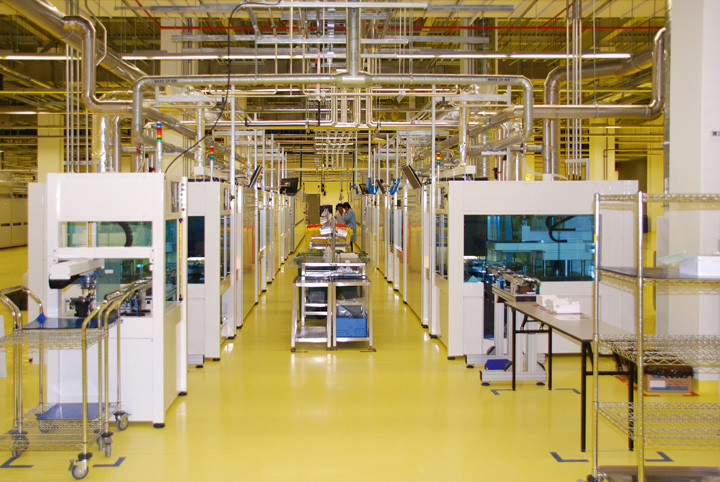This is “Exporting, Importing, and Global Sourcing”, chapter 9 from the book Challenges and Opportunities in International Business (v. 1.0). For details on it (including licensing), click here.
For more information on the source of this book, or why it is available for free, please see the project's home page. You can browse or download additional books there. To download a .zip file containing this book to use offline, simply click here.
Chapter 9 Exporting, Importing, and Global Sourcing

© 2003–2011, Atma Global Inc. Reprinted with permission.
What’s in It for Me?
- What are importing and exporting?
- What is countertrade?
- What is global sourcing?
- How do companies manage importing and exporting?
- What options do companies have to finance their importing and exporting?
A major part of international business is, of course, importing and exporting. An increase in the level of exports and imports is, after all, one of the symptoms of a flattening world. In a flat world, goods and services can flow fluidly from one part of the globe to another. In Section 9.1 "What is Importing and Exporting?" you’ll take a quick look back in time to see importing and exporting in their historical context. Then, you’ll discover the reasons why companies export, as well as the pitfalls and risks associated with exporting. Next, you’ll venture into more specialized modes of entry into an international market, moving progressively from the least expensive to the most expensive options.
Section 9.2 "Countertrade" focuses on what countertrade is and why companies engage in it. You’ll learn about countertrade structures, such as barter and counterpurchase, and the role they play in the modern economy.
In Section 9.3 "Global Sourcing and Its Role in Business", you’ll explore global sourcing and study the best practices to manage sourcing, to judge quality from afar, and to improve sustainability through well-planned sourcing that’s beneficial to the environment. You’ll understand what outsourcing is, why companies outsource, and what the hidden costs of outsourcing are. Some of these costs are related to the fact that the world is not all that flat! You’ll see tips for managing outsourced services and look at the opportunities that outsourcing offers entrepreneurs.
Section 9.4 "Managing Export and Import" reviews the mechanics of import and export—from the main players involved, to the intermediaries, to the important documentation needed for import and export transactions.
Section 9.5 "What Options Do Companies Have for Export and Import Financing?" concludes the chapter with a look at the options companies have for financing their import/export activities.
Opening Case: Q-Cells
Q-Cells exemplifies the successes and challenges of global importing and exporting. Founded in Germany in 1999, the company became the largest manufacturer of solar cells worldwide.LDK Solar, “Q-Cells and LDK Solar Announce Formation of Joint Venture for Development of PV Systems in Europe and China,” news release, April 8, 2009, accessed October 27, 2010, http://www.ldksolar.com/med_press_list.php?news_id=100. By 2010, however, it was experiencing losses due, in part, to mistiming some of the entry strategies that are covered in Section 9.1 "What is Importing and Exporting?".
First, it’s important to know that Germany is a high-cost manufacturing country compared to China or Southeast Asia. On the other hand, Germany is known for its engineering prowess. Q-Cells gambled that customers would be willing to pay a premium for German-made solar panels. (You’ll learn more about this “country of origin” factor in Chapter 14 "Competing Effectively through Global Marketing, Distribution, and Supply-Chain Management".) The trouble was that solar cells aren’t that sophisticated or complex to manufacture, and Asian competitors were able to provide reliable products at 30 percent less cost than Q-Cells.
The Cost Advantage
Q-Cells recognized the Asian cost advantage—not only are labor and utility costs lower in Asia, but so are the selling, general, and administrative (SG&A) costs. What’s more, governments like China provide significant tax breaks to attract solar companies to their countries. So, Q-Cells opened a manufacturing plant in Malaysia. Once the Malaysian plant is fully ramped up, the costs to manufacture solar cells there will be 30 percent less than at the Q-Cells plant in Germany.

© 2011, Q-Cells SE
Then, Q-Cells entered into a joint venture with China-based LDK, in which Q-Cells used LDK silicon wafers to make its solar cells. The two companies also used each other’s respective expertise to market their products in China and Europe.Richard A. Kessler, “Q-Cells, China’s LDK Solar Form Joint Venture for Export Push,” Recharge, April 8, 2009, accessed September 9, 2010, http://www.rechargenews.com/regions/north_america/article175506.ece?print=true. Although the joint venture gave Q-Cells local knowledge of the Chinese market, it also locked Q-Cells into buying wafers from LDK. These wafers were priced higher than those Q-Cells could source on the spot market. As a result, Q-Cells was paying about 20 cents more for its wafers than competitors were paying. Thus, in the short term, the joint venture hurt Q-Cells. However, the company was able to renegotiate the price it would pay for LDK wafers.
To stay cost competitive, Q-Cells has decided to outsource its solar-panel production to contract manufacturer Flextronics International. Q-Cells’ competitors, SunPower Corp. and BP’s solar unit, also have outsourced production to contract manufacturers. The outsourcing has not only saved manufacturing costs but also brought the products physically closer to the Asian market where the greatest demand is currently. This has reduced the costs of shipping, breakage, and inventory carrying.Leonora Walet, “Sun Shines Through for Clean Tech Outsourcing,” Reuters, May 3, 2010, accessed September 9, 2010, http://www.reuters.com/article/idUSTRE6421KL20100503.
Opening Case Exercises
(AACSB: Ethical Reasoning, Multiculturalism, Reflective Thinking, Analytical Skills)
- Do you think Q-Cells could have avoided its current financial troubles? What could they have done differently?
- Do you see import or export opportunities for entrepreneurs or small businesses in the solar industry? What advice would you give them?




